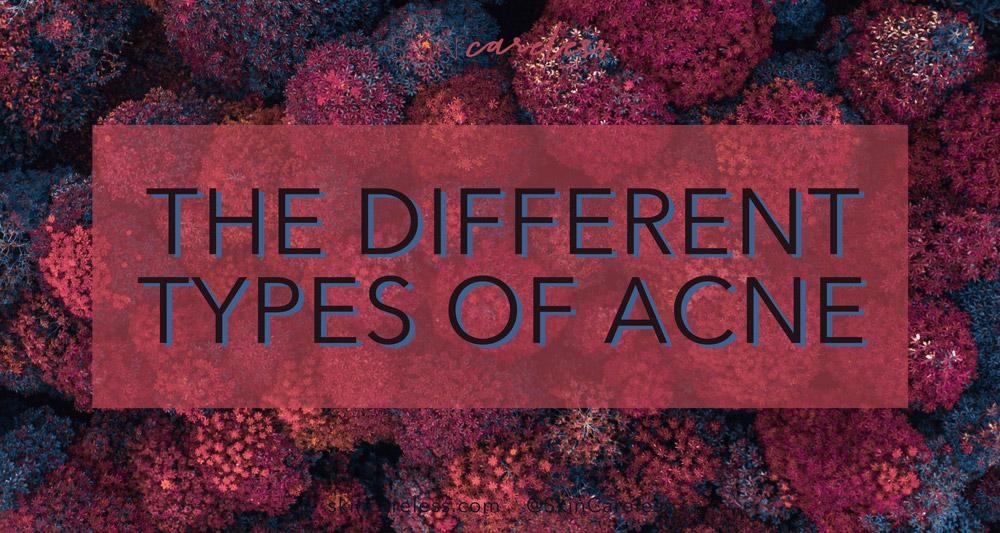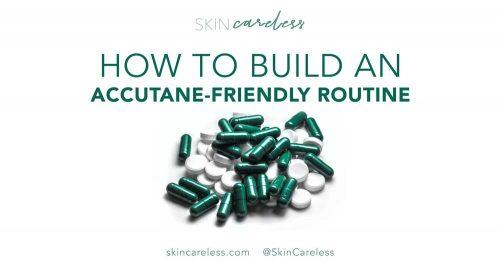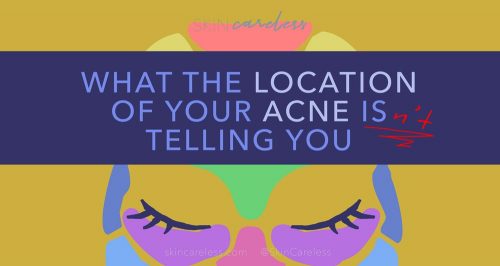Not all acne is created equal. It’s important to understand the various kinds of acne that can appear so you know which ingredients to treat it with. There’s a range of acne types, falling along a spectrum from easily treatable to chronic. These are broken down into two categories which have distinct features.
The two kinds of acne
There are two basic and distinct categories of acne – non-inflammatory and inflammatory. As the names suggest, one kind of acne evokes an inflammatory response from the skin, while the other does not. This leads to two very different presentations and two methods of treatment.
How to determine which type of acne you have
Figuring out which category of acne you are mainly suffering from is really simple. Ask yourself two questions:
Is my acne very red?
and
Does my skin look inflamed?
If the general answer to both of these is no, then you have non-inflammatory acne.
If yes, you have inflammatory acne.
Non-inflammatory acne
This kind of acne is a build up of material in the skin’s pores which has not triggered an immune response. In turn, these kinds of acne are not red or painful. But they can linger and tend not to resolve themselves unless treated.
This is because the body does not recognise this acne as foreign and so just leaves it alone.
Often, they can be treated with exfoliation to clear the blockage to the pore. There are two sub-types of non-inflammatory acne – blackheads and whiteheads.
Blackheads (open comedones)
Blackheads are maybe the most common skin complaint. I believe this is partially due to sebaceous filaments – which are extremely common and normal – being ‘misdiagnosed’ as blackheads. So first be sure that you’re really suffering from blackheads and not sebaceous filaments.
Real blackheads look like dark grey or black specks in a pore. They are generally few and far in between, but can be more common on skin that is rarely cleansed or exfoliated or that is very oily. They appear mostly on the inner cheeks, chin, nose and forehead where the skin is oiliest. Blackheads are made of sebum, dead skin cells and other debris that’s sitting in a pore and is exposed to the air, drying out and oxidising the outermost portion and turning it black. They’re caused by very oily skin or a lack of exfoliation or proper cleansing.
Whiteheads (closed comedones)
Whiteheads or closed comedones are another common complaint. They can range from deep under the skin, colourless bumps to obvious small white pimples. Whiteheads are made of sebum and bacteria trapped within a pore, covered by a layer of skin and closed off from the air. They can be caused by products that disagree with your skin and are too heavy or oily, and a lack of exfoliation which traps debris in the pore.
How to treat non-inflammatory acne
Treating non-inflammatory acne is all about clearing the pores and keeping them clear day-in and day-out. Read on to learn the best ingredient for fighting blackheads and whiteheads.
Inflammatory acne
Inflammatory acne is generally what is considered more moderate-severe. It causes swelling and redness and of course, inflammation. This kind of acne is particularly tricky because it leads to the most acne marks and scars.
Papules & Pustules
Papules are red, hard swollen clogged pores. They look like small red bumps on the skin and are caused by a buildup of acne bacteria in the pore that the skin reacts to and attempts to clear out with an inflammatory response. Pustules are quite similar to papules but are filled with pus. They can look like whiteheads in that they have a white top, but they are redder and more inflamed thanks to our skin sending white blood cells to the area to treat the infection.
These two kinds of acne are more or less are of equal intensity. The final two presentations of inflammatory acne, however, are much more severe and often require dermatological help.
Nodules & Cysts
Nodules are cysts happen when the infection from acne begins or is spread deeper in the skin. They look like large, hard swollen lumps. They are covered by a thick layer of skin and so are very difficult to treat at home. These kinds of acne are the most likely to cause scarring and to recur in the same area over and over again.
How to treat inflammatory acne
Inflammatory responds best to anti-bacterial and anti-inflammatory treatments. Find out what’s the best ingredient for flattening inflammatory acne here.






[…] old skin (desquamation) all work together to deter bacteria which cause common skin conditions like acne, or in some cases rarer ones like MRSA infections. Those who suffer from barrier defects like […]
[…] prevents dehydration, it can also cause excess sweat production and acne, especially in the form of closed comedones. Susceptibility to fungal infections also increases as the skin isn’t able to dry out […]
[…] bacteria and sebum and keep the skin healthy. Then, depending on the kind of acne, you can go for different acne-fighting ingredients. Start here if you need help creating a beginner’s skin care […]
[…] Underwashing: If you’re not cleansing often enough, your products may not sink into your skin effectively because of the old products and oils in their way Also, not cleansing off the grime from the day could lead to breakouts and even further free radical damage that causes ageing. You’ll probably start to notice more closed comedones and other non-inflammatory acne conditions. […]
[…] also known as closed comedones, are one of the many different types of acne. They’re a non-inflamed collection of debris including dirt, oil, sweat and dead skin that […]
[…] be accompanied by irregular skin texture in the form of shallow acne-like eruptions (specifically papules and pustules), often referred to as adult […]
[…] be accompanied by irregular skin texture in the form of shallow acne-like eruptions (specifically papules and pustules), often referred to as adult […]